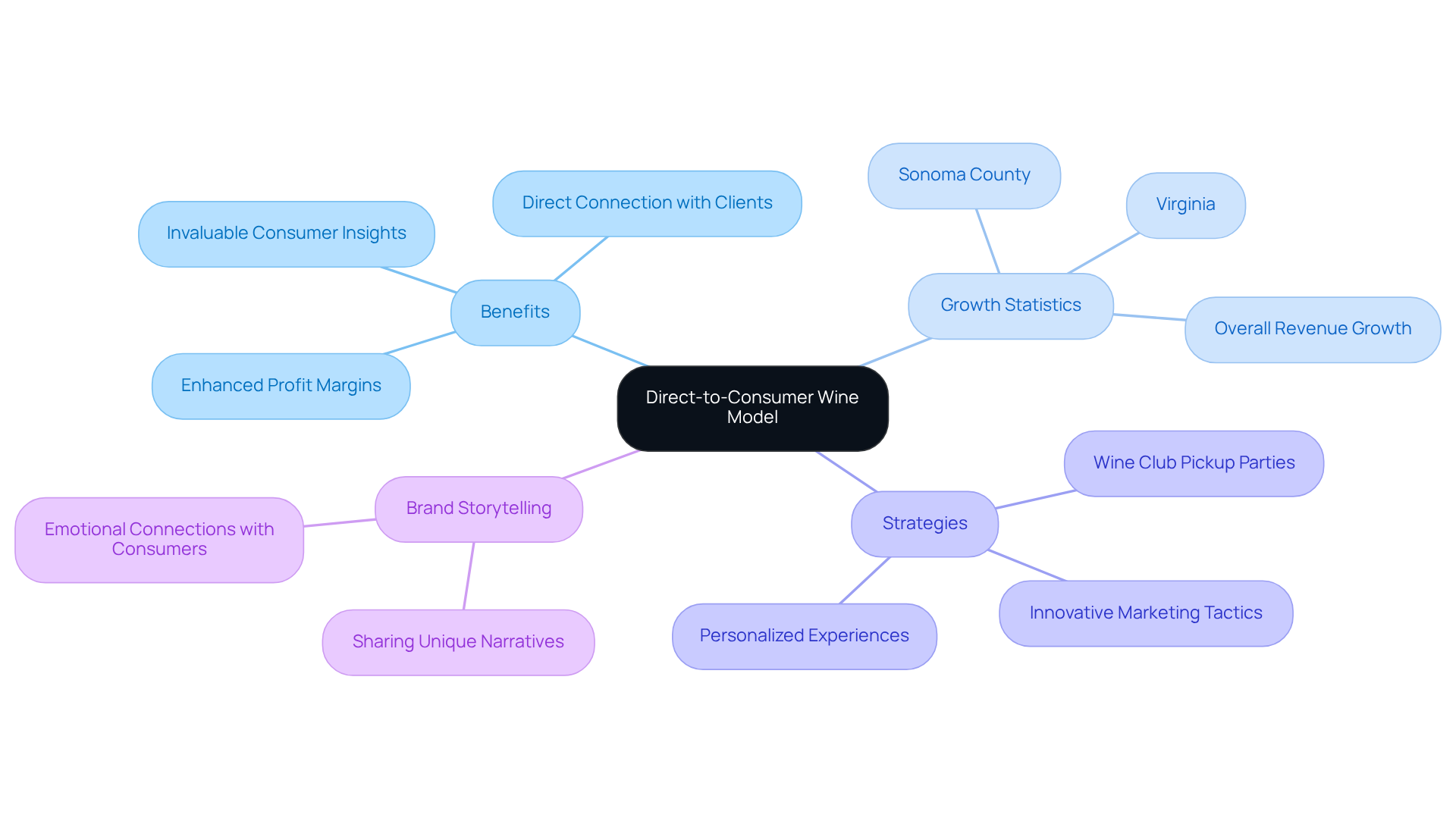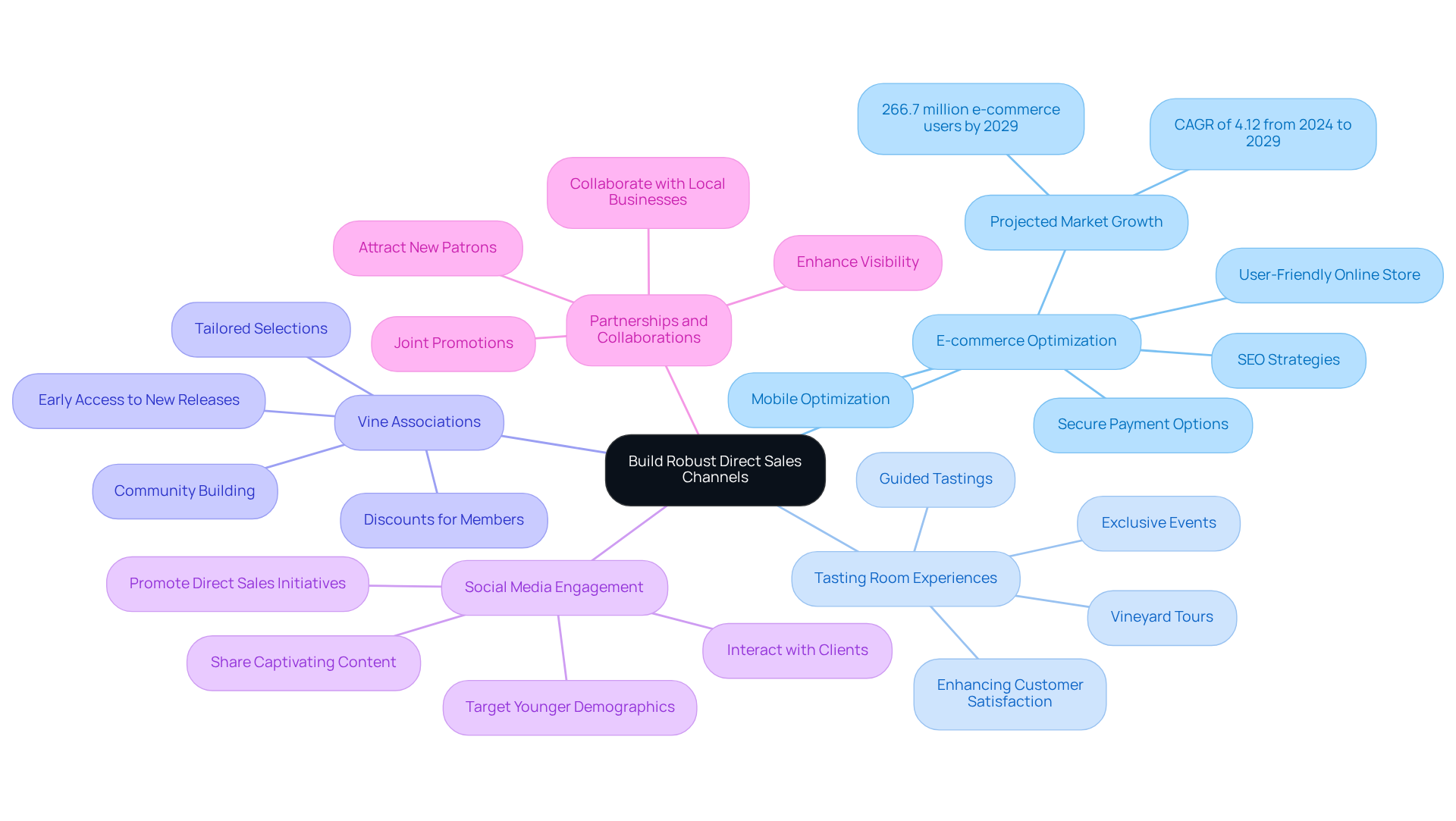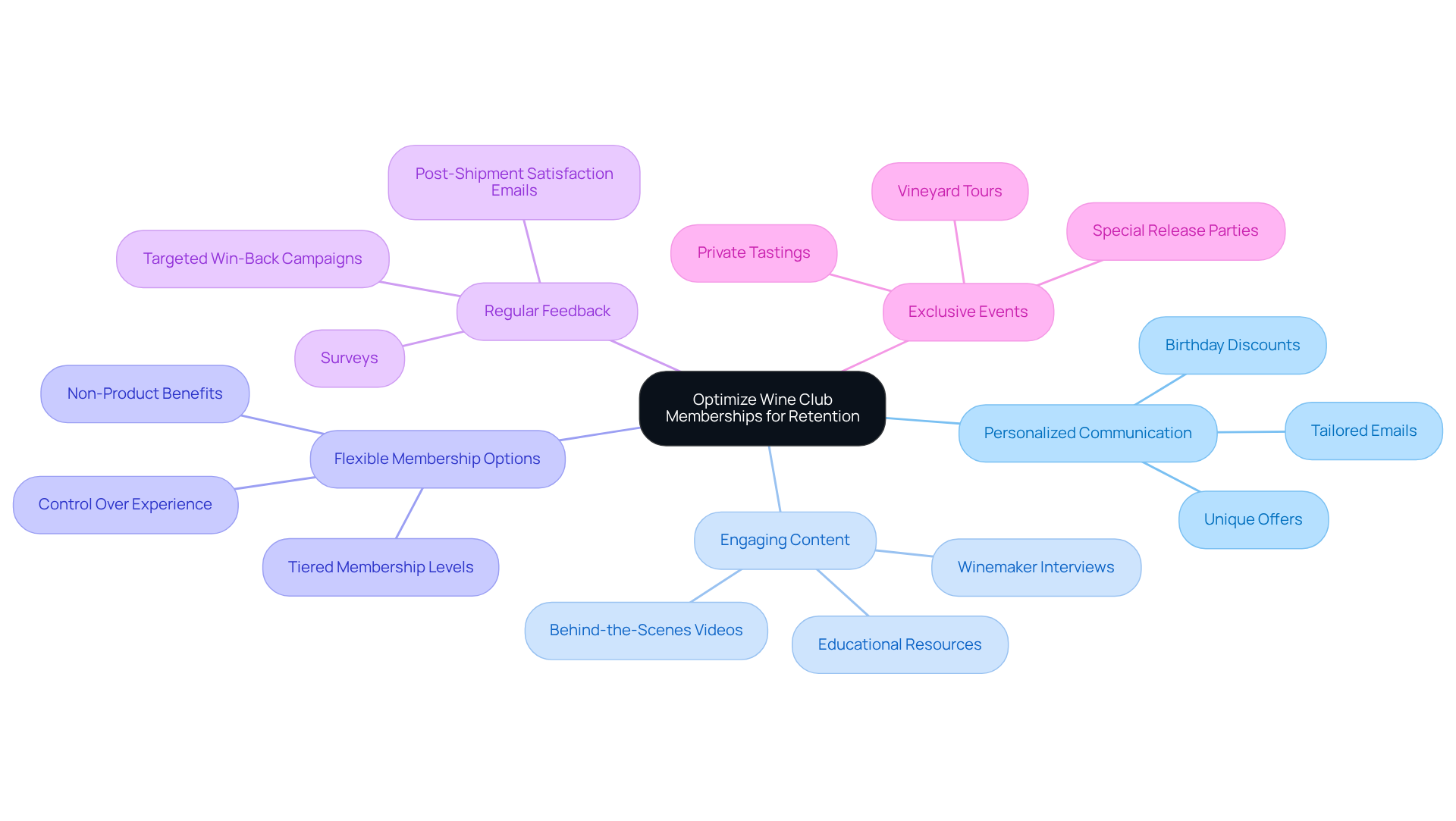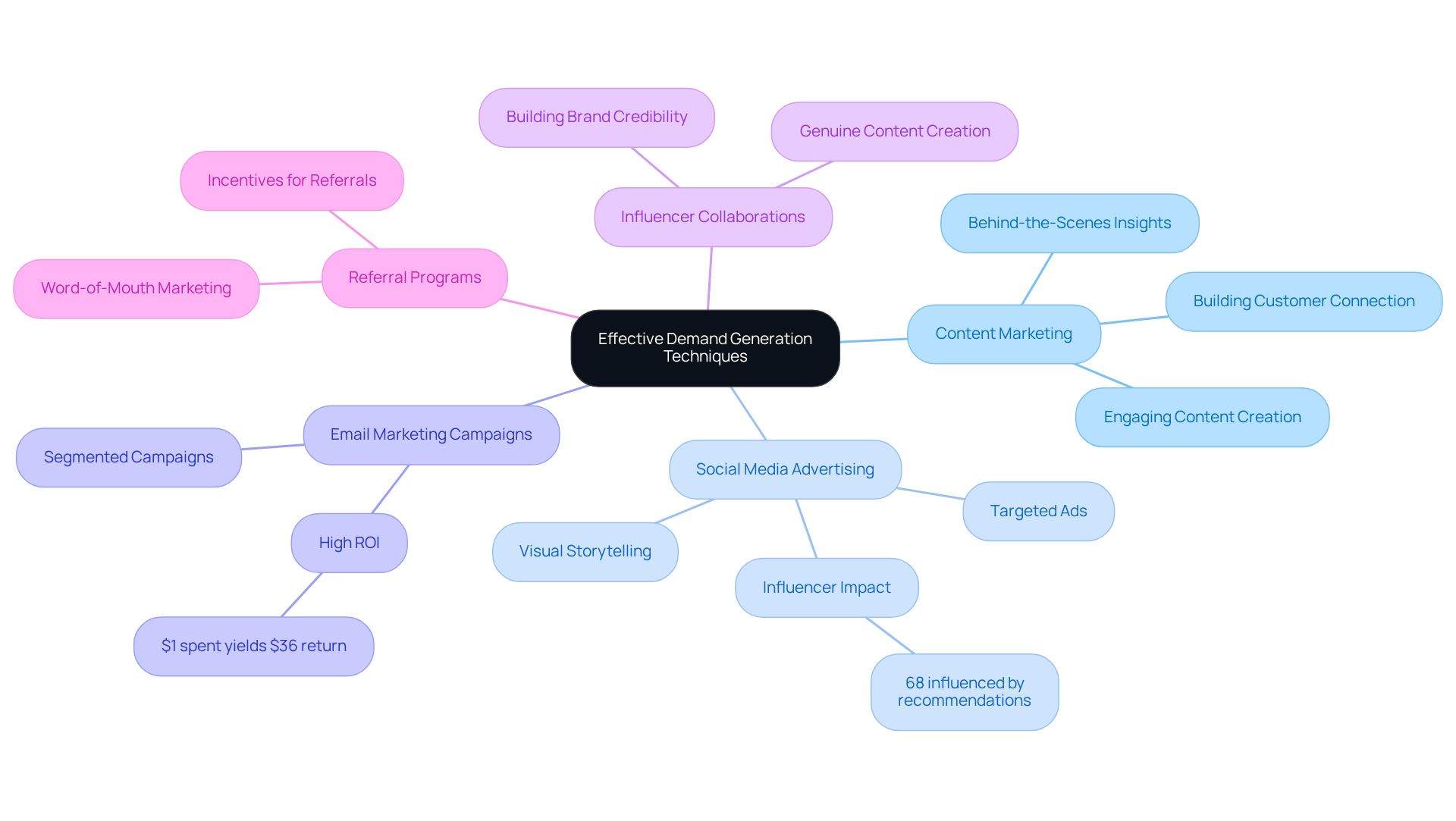Overview
This article presents proven strategies for wineries aiming to enhance direct sales, underscoring the critical role of direct-to-consumer (DTC) models that significantly improve profit margins and foster customer engagement. By outlining essential tactics—such as:
- optimizing e-commerce platforms
- crafting unforgettable tasting room experiences
- leveraging social media
wineries can cultivate stronger connections with consumers. These strategies are not merely suggestions; they are vital for driving revenue growth in an increasingly competitive market. The insights provided here are designed to empower decision-makers in the wine industry to take decisive action and achieve tangible results.
Introduction
The wine industry is undergoing a transformative shift as an increasing number of wineries adopt the direct-to-consumer (DTC) sales model. This strategy not only allows them to forge personal connections with customers but also enhances profitability. By fostering loyalty and providing invaluable insights into consumer preferences, this approach has become essential for wineries striving to excel in a competitive landscape.
As the market continues to evolve, what innovative strategies can wineries implement to effectively boost their direct sales and cultivate enduring relationships with their clients?
Understand the Direct-to-Consumer Wine Model
The direct sales wine model empowers producers to sell directly to consumers, effectively bypassing traditional distribution channels. This approach not only enhances profit margins but also fosters a direct connection with clients, enabling businesses to gather invaluable insights into consumer preferences and behaviors. According to the 2025 Direct-to-Consumer Wine Report, producers prioritizing direct sales wine have realized substantial revenue growth, with many noting increased customer loyalty and engagement. Notably, vineyards in Sonoma County and Virginia have reported the highest growth rates in direct sales wine, driven by innovative strategies such as wine club 'pickup parties' that foster personal connections with consumers.
Understanding the is crucial for vineyards striving to thrive in a competitive landscape, as it allows them to create personalized experiences in the realm of direct sales wine that resonate with their audience. This model also enriches brand storytelling, enabling vineyards to share their unique narratives and forge emotional connections with consumers. Moreover, Enocap's strategic capital planning services can assist vineyards in navigating financial challenges and optimizing their DTC initiatives. As the market evolves, the capacity to engage customers through compelling stories and tailored experiences becomes increasingly vital for long-term success.

Build Robust Direct Sales Channels
To establish robust direct sales channels, wineries must prioritize several essential strategies:
- E-commerce Optimization: Ensure your online store is user-friendly, mobile-optimized, and equipped with secure payment options. Implement SEO strategies to enhance visibility and attract organic traffic, as the digital wine market is projected to grow significantly, reflecting changing consumer habits.
- Tasting Room Experiences: Create memorable face-to-face interactions that motivate guests to buy directly from the vineyard. This includes guided tastings, vineyard tours, and exclusive events. The tasting room serves as the heart of the winery, creating lasting impressions that can lead to increased direct sales. Engaging experiences not only enhance customer satisfaction but also foster repeat visits.
- Vine Associations: Establish a vine association that provides unique advantages, such as early access to new releases, discounts, and tailored selections. This approach not only drives sales but also cultivates a sense of community among members, with accounting for a significant portion of direct-to-consumer sales.
- Social Media Engagement: Leverage social media platforms to promote direct sales initiatives, share captivating content, and interact with clients. This strategy helps build a loyal following and drives traffic to your sales channels, particularly among younger demographics who prioritize brands that resonate with their values.
- Partnerships and Collaborations: Collaborate with local businesses, restaurants, and tourism boards to create joint promotions that enhance visibility and attract new patrons. Such partnerships can broaden your reach and generate distinctive experiences that draw visitors to your establishment.
By implementing these strategies, producers can develop a comprehensive direct sales approach that maximizes revenue and strengthens customer relationships, ensuring long-term success in a competitive market.

Optimize Wine Club Memberships for Retention
To optimize wine club memberships for retention, wineries must implement strategies that leverage direct sales wine approaches, enhancing growth and loyalty.
- Personalized Communication: Customizing messages for each individual according to their preferences and purchase history is paramount. This includes tailored emails, birthday discounts, and unique offers, which significantly improve customer satisfaction and loyalty. Generic communication can lead to disengagement; thus, it is essential to ensure messages resonate with individual participants, reinforcing the brand narrative of the vineyard.
- Engaging Content: Providing participants with captivating content enriches their experience. Consider behind-the-scenes videos, winemaker interviews, and educational resources on wine pairings. High-quality content not only keeps individuals informed but also nurtures a deeper connection with the winery. Engaging content is crucial for sustaining interest and loyalty, transforming casual buyers into committed participants.
- Flexible Membership Options: Introducing tiered membership levels allows participants to choose benefits that best suit their needs. This flexibility caters to a varied clientele and can lead to increased retention rates, as individuals feel more in control of their experience. Wine clubs offering a minimum of have demonstrated 22% greater retention rates than product-only clubs, underscoring the effectiveness of strategic capital planning in enhancing participant satisfaction.
- Regular Feedback: Actively seeking input from participants is essential to assess their needs and preferences. Employing surveys and post-shipment satisfaction emails can provide valuable insights, demonstrating to participants that their views are appreciated and directly influence enhancements. Additionally, targeted win-back campaigns boast a 23-28% success rate compared to generic reactivation offers, highlighting the effectiveness of tailored feedback mechanisms in fostering loyalty.
- Exclusive Events: Arranging exclusive events for wine club participants, such as private tastings, vineyard tours, and special release parties, promotes a sense of community and belonging. These experiences enhance the emotional bond between the establishment and its participants. By crafting distinctive experiences, vineyards can boost member loyalty and involvement, ensuring that family-operated establishments flourish for generations. Strategic capital planning can support these events, ensuring they are well-funded and effectively executed.
By concentrating on these strategies, vineyards can significantly enhance the value of their wine clubs, leading to better retention rates and heightened patron loyalty, ultimately driving sustainable growth in direct sales wine.

Implement Effective Demand Generation Techniques
To implement effective demand generation techniques that align with Enocap's strategic vision for family-owned wineries, consider the following approaches:
- Content Marketing: Develop valuable content that educates and engages potential customers. This can include blog posts, videos, and infographics that highlight the winery's unique story, winemaking process, and product offerings, fostering a deeper connection with the audience. Incorporating behind-the-scenes glimpses of winemaking processes, vineyard management, and tasting experiences can further enhance engagement, transforming casual buyers into loyal club members.
- Social Media Advertising: Leverage targeted social media ads to reach specific demographics and promote special offers, events, and new releases. With almost 3 billion active users on Facebook and 2 billion on Instagram, these platforms are especially effective for in the beverage industry. Statistics indicate that 68% of beverage consumers are influenced by suggestions from beverage influencers, making social media an essential channel for engagement. Furthermore, 71% of consumers are more likely to choose a brand that personalizes their content, highlighting the importance of tailored advertising in driving direct-to-consumer revenue.
- Email Marketing Campaigns: Create segmented email marketing campaigns that deliver personalized offers and updates to subscribers. This approach nurtures leads and converts them into loyal customers, with every $1 spent on email marketing yielding approximately $36 in return, making it a highly effective strategy for enhancing customer loyalty and driving sales.
- Influencer Collaborations: Work with influencers in the beverage and lifestyle sectors to reach new audiences. Influencers can create genuine content that highlights the establishment's products and experiences, enhancing brand visibility and credibility. Notably, 68% of wine consumers are influenced by wine recommendations from these influencers, underscoring their importance in marketing strategies that aim to transform family-owned wineries.
- Referral Programs: Create referral initiatives that reward current clients for bringing in new patrons. This strategy efficiently utilizes word-of-mouth marketing, broadening the clientele through trusted endorsements. However, it is essential to ensure that the incentives offered are appealing enough to encourage current clients to participate, thereby supporting sustainable growth.
By employing these demand generation techniques, wineries can cultivate a sustainable pipeline of interested customers, ultimately driving sales and enhancing brand visibility, in line with Enocap's mission to secure the right capital and craft stories that sell.

Conclusion
The direct-to-consumer (DTC) wine model represents a transformative opportunity for wineries, enabling them to engage directly with consumers while enhancing profitability. By embracing this approach, wineries can streamline their sales processes and cultivate meaningful relationships with their customers, ultimately driving loyalty and repeat business. The evidence is clear: wineries that prioritize direct sales are witnessing significant growth, particularly through innovative strategies that create memorable experiences and foster community connections.
Key strategies for boosting direct sales encompass:
- Optimizing e-commerce platforms
- Enhancing tasting room experiences
- Leveraging social media to engage with consumers
Furthermore, developing robust wine club memberships through personalized communication and exclusive events can significantly improve retention rates. These practices not only increase sales but also deepen the emotional ties between the winery and its patrons, ensuring that customers feel valued and connected to the brand.
As the wine industry continues to evolve, implementing effective demand generation techniques is essential for sustaining growth. By investing in content marketing, targeted advertising, and influencer collaborations, wineries can reach new audiences and drive interest in their offerings. The integration of these strategies will enhance visibility and secure a loyal customer base. Wineries are encouraged to adopt these proven methods, ensuring they thrive in a competitive market while crafting compelling stories that resonate with consumers.
Frequently Asked Questions
What is the direct-to-consumer (DTC) wine model?
The DTC wine model allows producers to sell wine directly to consumers, bypassing traditional distribution channels. This approach enhances profit margins and fosters a direct connection with clients.
What are the benefits of the DTC wine model for producers?
Producers benefit from substantial revenue growth, increased customer loyalty, and enhanced engagement by prioritizing direct sales wine.
Which regions have reported the highest growth rates in direct sales wine?
Vineyards in Sonoma County and Virginia have reported the highest growth rates in direct sales wine.
What innovative strategies are being used to promote the DTC model?
Strategies such as wine club 'pickup parties' are used to foster personal connections with consumers.
Why is understanding the DTC model important for vineyards?
Understanding the DTC model is crucial for vineyards to create personalized experiences and thrive in a competitive landscape.
How does the DTC model enhance brand storytelling?
The DTC model enriches brand storytelling by enabling vineyards to share their unique narratives and forge emotional connections with consumers.
What assistance can Enocap provide to vineyards?
Enocap offers strategic capital planning services to assist vineyards in navigating financial challenges and optimizing their DTC initiatives.
Why is engaging customers through storytelling and tailored experiences vital?
Engaging customers through compelling stories and tailored experiences is increasingly vital for long-term success as the market evolves.




